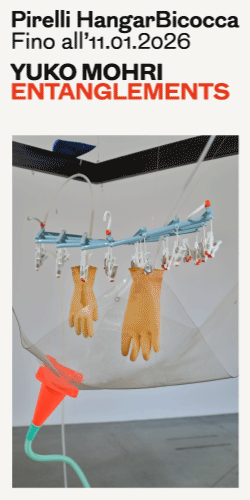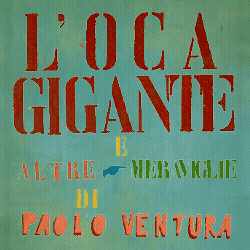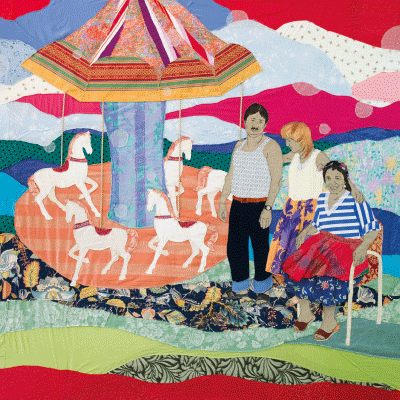[nemus_slider id=”47380″]
—
Segue il testo in italiano
Davide Bertocchi interviews Camille Henrot —
I met up with Camille Henrot on a rainy Parisian afternoon to discuss her most recent travelling exhibition project “The Pale Fox”, commissioned produced and shown by Chisenhale Gallery, London; Kunsthal Charlottenborg, Copenhagen; Bétonsalon, Paris; Westfälischer Kunstverein, Münster, and now finally at KÖNIG GALERIE where the exhibition has just opened. We organised a lunch date at the Chameleon. It may or may not be a significant detail but I will find out mid conversation the importance of the reptile’s significance.
Camille speaks Italian, I compliment her on speaking it so well and I encourage her to pursue the language for the rest of the interview. She agrees to do so and tells me that it’s the first time she has done an interview in Italian. Between the different dinner courses (she chose the kidneys “…like Léopold Bloom in Ulysses…”) we talked about various things since it has been a while since we had seen each other and she also told me a very funny Breton story that her grandmother had told her. Apparently her grandmother liked doing just that, telling stories. I find this information very interesting in understanding the refined narrative dynamics of her work.
The coffee arrives and we begin the interview…
Davide Bertocchi: You’ve been living in New York for some time. What kind of changes have you experienced and how have these changes influenced your work?
Camille Henrot: I didn’t just become a New Yorker overnight. I went to New York for six months and then I went back to Paris for a bit. I’ve gone backwards and forwards several times. For me New York is very abstract. When you’re in New York you don’t feel like you’re in the United States because this city doesn’t belong to any nationality. As described by Yona Friedman, New York is a world of its own. For me New York represents one extreme of being everywhere to the other of being nowhere. Of course it has influenced my work. For example the project that I did involving Ikebana was carried out in New York because when I moved there I didn’t have any of my belongings with me, I had left everything in Paris. It is only when I started to work on “Grosse Fatigue” that I decided to move to New York for good. This involved transferring all the things from my apartment and from my study. I like to accumulate things and I think my exhibition “The Pale Fox “reflects this.
Instead of moving in with 50 boxes I had somehow accumulated 350! I am very attached to objects. I have a mountain of things as well as things that I make myself, so moving for me was a real challenge. This particular attachment that I have makes me focus on the condition of objects such as the difficulty of moving from one place to another. It also makes me think about this virtual world that we live in where things are nonexistent, where the material is disappearing. I started to think a lot about these two ideas and how we could relate one to the other: in particular the fetishism of objects and the sentimental attachment to objects that once belonged to me. I think that the Smithsonian and museums have the same emotional connection to historical objects which could also be described as a sentimental attachment. Yet at the same time we are trying to figure out what it means to live in a digital society where we associate ourselves more to images rather than objects.
DB: When I invited you to take part in my exhibition Zodiaco, I specified that I was choosing artists according to their star signs; you told me that the current method that I was applying to determine my choices was similar to the method you had used for your exhibition “The Pale Fox” at Chisenhale in London: as you said “the distribution of objects in space following a grid of equivalences between principles, the cardinal points, the age of man and the four elements”. Could you tell me more about the systems you used and how you applied them to the exhibition?
CH: Yes, in fact I was very much inspired by the book “Le renard pâle” written by two ethnologists Marcel Griaule and Germaine Dieterlen in 1965. What struck me the most from this text was the recognition of man’s ability to create a system where everything can re-enter, by creating an artificial form of common knowledge that remains aesthetic yet pleasant. Pleasant meaning that it can be shared. After looking at the amount of space available in Chisenhale, which happens to remind me of the golden rectangle, I realised that it would have been interesting to create an exhibition using my own personal Feng Shui. Every wall in the exhibition corresponds to a different principle. The first wall is the principle of Leibniz otherwise known as the “principle of being”, with reference to the shape of a spiral and to the idea of birth. On this wall I’ve placed the photo of my niece and the sculpture with the ostrich’s egg. Then there is another wall dedicated to the “principle of continuity” which represents how things develop and grow. An example of this is the principle of self-inclusion, following the idea that the fish comes from an egg which comes from a fish and so on. Things are self-inclusive and everything corresponds to childhood.
Another wall is called “the principle of sufficient reason” which corresponds to the time of maturity where we discover our limits linked to different factors such as money, water, the earth, illness, death and problems. In other words it makes reference to the limitations that form our reality. All in all, the walls have the role of providing an equivalent orientation of north, south, east and west.
DB: …and in the exhibition is there a specific connection between the actual cardinal points and these principles right here. For example, this one goes north, this one goes south, that one goes west…?
CH: At the beginning there was, but now I have to change it a little bit because the cardinal directions of every exhibition that I do seem to change slightly, therefore I must adapt my work. Finally, after “maturity” there is a wall that corresponds to the old age linked to “the principle of the identity of indiscernible”. As if this wasn’t enough, each wall makes a reference respectively to an element: water, air, earth and fire. This is how I thought about the exhibition, building these groups. I also bought four hundred objects on eBay, and with the other things that I already had in the studio, I started to think about how to organize them following this system.
DB: In fact my following question goes on to this topic. The idea of looking for objects on eBay intrigues me. How do you choose the objects? Are your choices determined by something or is it down to chance? Or is there room for chance inside this mental structure?
CH: The problem is that I’m very obsessive and every time that I start something I find it very hard to control myself, this happens when I’m on eBay. The concept of having limits and restrictions is a big problem for me. In fact, setting up the exhibition for the first time was a lot of fun because I found it very easy to set up everything apart from this wall that represents maturity and limits, or otherwise known as the wall of “the principle of sufficient reason”. I had a very precise idea of how to organise all the other principles but I really struggled with this particular wall. I don’t like just thinking about one limit. When I’m on eBay there comes a time when I buy lots of things but then I go and do something else because otherwise I can’t stop myself. Therefore for this exhibition I made a list of keywords and I asked my assistant to suggest some objects based on those words and I chose from this selection. This seemed to be the most rational way to go about it otherwise I would have spent night and day on eBay.
DB: This means that it’s not a random search but is instead influenced by certain keywords…
CH: Exactly, it’s a linguistic research, it’s essential that the object relates to a certain thing. For example an object that I find funny is “The Bible Crosswords”, the connection between Christianity and the idea of a game is important. A crossword is something that people do when they have nothing else to do. Therefore it could be said that it reflects religion in this part of the world, which is more of a hobby for ladies over fifty who go to church or do crossword puzzles. I like this idea of a game being linked to the Bible because it also has something to do with the idea of dogma and being trapped in a closed sphere of ideas. Not surprisingly, crosswords can have many constraints and provide a limited space for responses. For this reason I have never really liked crosswords because there is never the possibility for more than one answer as only one answer can be written. I’m not able to play a game where there is only one specific outcome; it reminds me of religious dogmatism. Nevertheless, I like this object as it inspires me with all those thoughts.
To be continued…


Camille Henrot, The Pale Fox – La Volpe Pallida (riflessioni sull’ordine e il caos) #1
Davide Bertocchi intervista Camille Henrot —
Incontro Camille Henrot in una piovosa giornata parigina per parlare del suo recente grande lavoro itinerante “The Pale Fox” (La volpe pallida) commissionato e presentato rispettivamente da Chisenhale Gallery, al Kunsthal Charlottenborg, al Bétonsalon di Parigi , al Westfälischer Kunstverein di Münster e ora, come meta finale, da KÖNIG GALERIE a Berlino (fino all’1/11).
Mi dà appuntamento per pranzo al Chameleon. Dettaglio inconsapevole, o forse no, ma la suggestione del rettile risulterà importante e lo scoprirò solo a metà conversazione.
Camille parla italiano. Le faccio notare che è impeccabile e quindi le suggerisco di affrontare così tutta l’intervista. Accetta dicendomi che è la prima volta che risponde a un’intervista in questa lingua. Tra un piatto e l’altro – dal menu lei ha scelto di provare i rognoni «…come Léopold Bloom nell’Ulysse di Joyce»… – mi racconta varie cose, perchè non ci siamo visti da tempo, e anche una storia bretone molto divertente che le ha raccontato sua nonna. A quanto pare la nonna faceva proprio questo, raccontava le storie. Trovo questa informazione molto interessante nell’ottica di comprensione delle dinamiche narrative dei suoi lavori.
Arriva il caffè e cominciamo con l’intervista.
Davide Bertocchi : Da qualche anno abiti a New York. Che tipo di cambiamento ha portato e che influenza ha avuto nel tuo lavoro?
Camile Henrot: Non sono arrivata a New York e sono diventata newyorchese da un giorno all’altro. Sono andata per sei mesi, sono poi tornata per un po’ a Parigi, poi ritornata varie volte. Secondo me New York è una città molto astratta. Non sei negli Stati Uniti quando sei a New York perché é una città che non appartiene a nessuna nazionalità. È veramente una «città-mondo» come la sognava Yona Friedman. Essere a New York, a mio parere, è come essere dappertutto o da nessuna parte.
Certo, ha influenzato il mio lavoro. Ad esempio, il progetto con gli Ikebana l’ho fatto a New York perché quando mi sono trasferita lì non avevo le mie cose. Tutto era rimasto a Parigi. Quando ho iniziato a lavorare su « Grosse Fatigue » era proprio il momento in cui ho deciso di spostarmi definitivamente a New York, quindi di spostare tutto il mio studio e appartamento. Sono un’accumulatrice di oggetti e penso che si veda molto nella mostra «The Pale Fox». Quando mi sono trasferita non è che ho traslocato con 50 scatole, ma con 350 scatoloni! Sono molto affezionata agli oggetti. Ho una moltitudine di cose e anche molte che faccio io, quindi trasferirmi è stata davvero un’avventura.
Proprio questo mi ha fatto pensare alla condizione degli oggetti, così difficili da muovere da un luogo all’altro, ma allo stesso tempo anche a questo mondo in cui viviamo che è virtuale e dove le cose sono inesistenti, la materialità sta sparendo. Ho cominciato a pensare molto a queste due idee e a come si potessero collegare: il feticismo degli oggetti e l’attaccamento sentimentale alle cose che avevo. Mi viena da pensare che lo Smithsonian e i musei abbiano lo stesso tipo di legame affettivo agli oggetti storici. Un attaccamento sentimentale. Anche se contemporaneamente stiamo scoprendo ciò che vuol dire vivere in una società digitale dove quello a cui siamo abituati sono le immagini e non gli oggetti.
DB : Quando ti ho invitato a partecipare alla mia mostra Zodiaco, specificando che stavo scegliendo gli artisti a partire dal loro segno astrologico, quindi applicando un sistema esistente che avrebbe determinato le mie scelte, tu mi hai detto che era una soluzione molto simile a quella che hai utilizzato per la tua mostra « The Pale Fox ». Ovvero, «la distribuzione degli oggetti nello spazio seguendo una griglia di equivalenza tra i principi, i punti cardinali, l’età dell’uomo, e i quattro elementi». Mi puoi dire di più su questa utilizzazione di sistemi e come li hai applicati alla mostra?
CH: Si, in effetti, per questa mostra mi sono ispirata molto al libro «Le renard pâle» appunto, scritto dagli etnologi Marcel Griaule e Germaine Dieterlen nel 1965. Ciò che mi ha colpito nel testo è il constatare questo tentativo, da parte degli uomini, di voler costruire un sistema dove può rientrare tutto, di creare una forma sintetica di conoscenza globale, ma in un modo che rimanga estetico e simpatico. Per simpatico intendo che si può condividere. Poi vedendo lo spazio di Chisenhale – che mi ha fatto pensare al rettangolo aureo – ho capito che sarebbe stato interessante costruire una mostra creando un mio Feng Shui personale. Quindi ogni parete della mostra corrisponde a principi diversi. Il primo muro è il principio di Leibniz che sarebbe il «principio dell’identità, dell’essere», in riferimento alla forma della spirale e all’idea della nascita: è il muro dove ho messo la foto di mia nipote e la scultura con le uova di struzzo. Poi c’è un altro muro dedicato al «principio della continuità» che corrisponde all’idea di come le cose si sviluppano e crescono. Ad esempio il principio della auto-inclusione, come il pesce che è dentro all’uovo, e l’uovo proviene dal pesce, e così via. Le cose sono auto-incluse. Tutto ciò corrisponde al momento dell’infanzia. Un altro muro si chiama il «principio di ragion sufficiente» e che corrisponde al momento della maturità dove troviamo i limiti, tipo i soldi, l’acqua, la terra, la malattia, la morte, i problemi. Ovvero i limiti che compongono la nostra realtà. In pratica i muri servono a dare un’orientamento equivalente al nord, sud, est, ovest.
DB : …e nella mostra esiste una specifica relazione tra i veri punti cardinali e questi principi ben precisi? ad esempio, questo va a nord, questo a sud, quello a ovest…?
CH: All’inizio sì, ma poi ho dovuto cambiare un pochino perché l’orientazione dei cinque luoghi dove il lavoro è stato esposto è sempre un po diversa quindi mi sono dovuta adattare. E per finire, dopo la maturità, c’e il muro che corrisponde alla vecchiaia legato al «principio di identità degli indiscernibili». Come se non bastasse, ogni muro fa riferimento anche a un elemento, rispettivamente, acqua, aria, terra e fuoco. Ecco è un po così che ho pensato alla mostra, costruendo questi gruppi. Poi ho anche comprato quattrocento oggetti su eBay e, con gli altri che già avevo in studio, ho cominciato a pensare a come ordinarli seguendo questo sistema.
DB : Infatti la mia domanda successiva riguarda proprio questo. Mi interessa molto questa cosa di cercare gli oggetti su eBay. Come li scegli? E’ una scelta determinata da qualcosa oppure aleatoria? Cioè, l’aleatorio trova spazio all’interno di questa struttura mentale?
CH: Il problema è che sono molto ossessiva e ogni volta che comincio qualcosa trovo molto difficile fermarmi, e questo mi capita anche quando sono su eBay. Il concetto di limite è un grande problema per me. Infatti, è stato molto divertente quando ho installato la mostra per la prima volta perché trovavo molto facile installare tutto ad eccezione di questo muro, il muro della maturità e dei limiti, quello del «principio di ragion sufficiente. Per tutti gli altri principi avevo idee molto precise su come organizzarli, ma questo muro e il principio del limite mi ha messo davvero in difficoltà.
Il solo pensare a un limite non mi piace. Su eBay c’è un momento in cui compro molte cose ma poi me ne allontano, perché altrimenti non riuscirei a fare nient’altro. Quindi per questa mostra ho fatto una lista di parole chiave e ho chiesto alla mia assistente di suggerirmi una selezione di oggetti in base a queste parole. Questo è stato il modo più razionale per procedere altrimenti avrei passato giorno e notte su eBay.
DB : Quindi non è una ricerca casuale ma orientata da queste parole chiave….
CH: Esattamente, è una ricerca linguistica, ed è necessario che l’oggetto parli di una certa cosa. Se prendiamo un oggetto che mi fa molto ridere, ad esempio le parole crociate dalla bibbia «The Bible Crosswords», è importante la connessione tra religione cristiana e l’idea di gioco. E’ qualcosa che la gente fa perché non ha niente da fare e così forse riflette proprio la concezione di religione nella nostra parte del mondo, che è sempre più un’occupazione per signore ultra cinquantenni che vanno in chiesa o fanno i cruciverba.
Mi piace questa idea del gioco legato alla Bibbia perché ha a che vedere anche con l’idea di dogma e dell’essere all’interno di un perimetro chiuso di idee. Non a caso, anche nelle parole crociate hai molte costrizioni e uno spazio limitato di risposta. Proprio per questo non mi sono mai piaciute le parole crociate perché c’e sempre e solo una possibilità, una sola soluzione. Non sono capace di giocare a un gioco con una sola possibilità, è come col dogmatismo religioso; ma comunque questo oggetto mi piace perché mi ispira tutti questi pensieri.
Continua…













